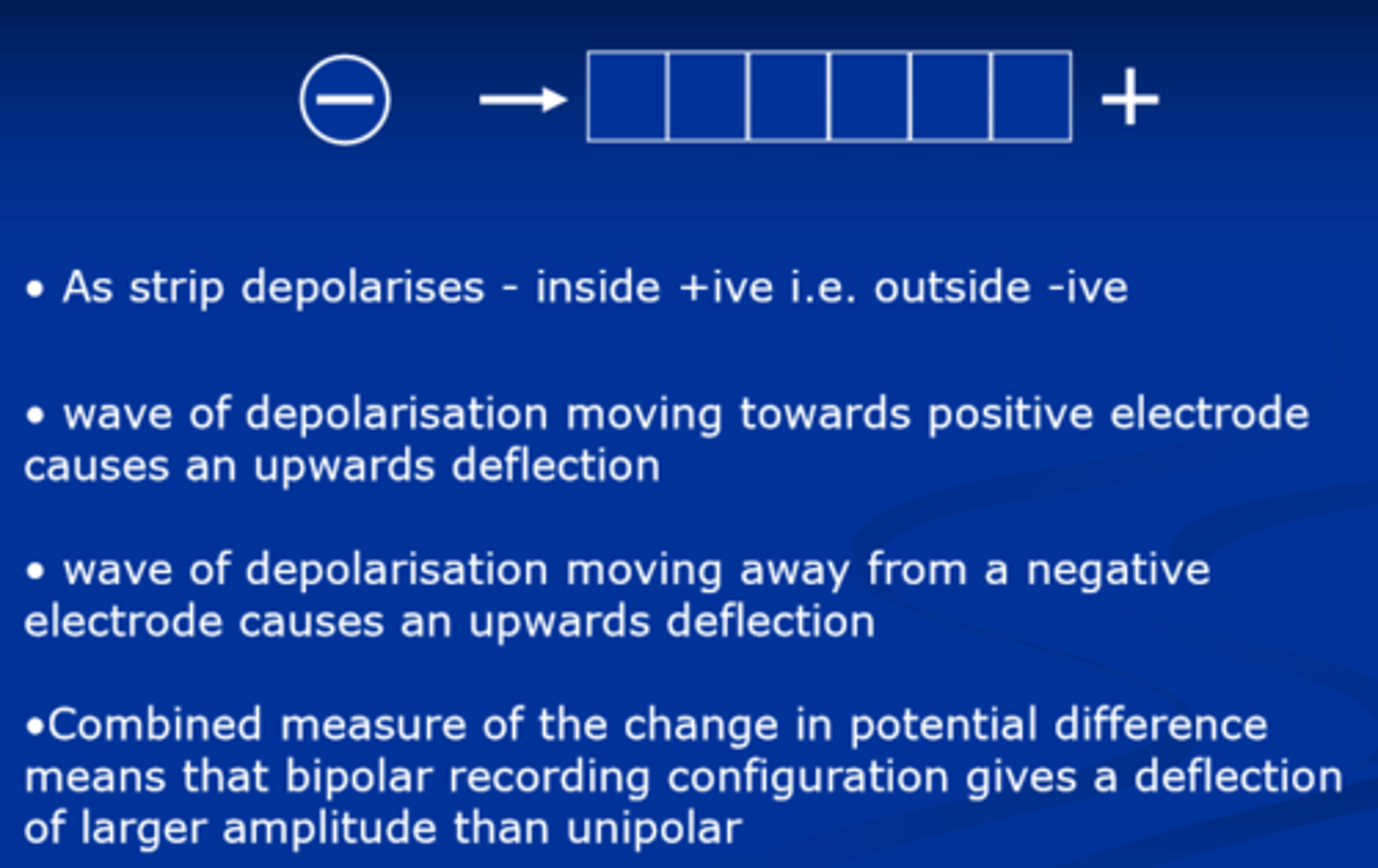The Electrocardiogram
1/15
There's no tags or description
Looks like no tags are added yet.
Name | Mastery | Learn | Test | Matching | Spaced |
|---|
No study sessions yet.
16 Terms
what does the ECG provide information about?
-Timing and direction of cardiac events (atrial and ventricular depolarisation, ventricular repolarisation only)
-Rate/rhythm disturbances
-Conduction abnormalities
-Mass of active myocardium
-Tells about spread of wave of excitation across cardiac cells
what does excitation in a cell lead to?
tension development
what does plateau protect from?
fused tetanic contraction
what is ECG measuring?
movement of waves of electrical activity.
what is being looked at in an ECG trace?
difference between indifferent cells (taking a mean) and those cells near the electrode (it is influenced by cells its closest to)?
where does the deflection go with a positive electrode on the right?
position electrode to right (wave is moving towards electrode).
Upward deflection on trace recorded.
where does the deflection go with a positive electrode on the left?
recording electrode is on the left (wave moving away).
Downward deflection on trace recording.
where does the deflection go with a positive electrode perpendicular to wave?
no changes on trace - straight line.
where does the deflection go with a negative electrode on the right?
downward deflection
where does the deflection go with a negative electrode on the left?
upward deflection
depolarisation on a bipolar recording

what does repolarisation do to an ECG?
repolarisation moving towards positive = downward deflection
repolarisation moving away from positive = upward defection
how does voltage flow in the heart?
at if between 2 terminals in a volume conductor, and intra-thoracic contents also act as volume conductors
what do surface recording of potential differences provide?
3D picture of electrical events in the heart.
in excitation were do the wavefronts of depolarisation move?
move through the atria and ventricles in various directions.
at any instance what is the recorded potential difference?
vectoral resultant (mean vector) of several differently directed wavefronts.